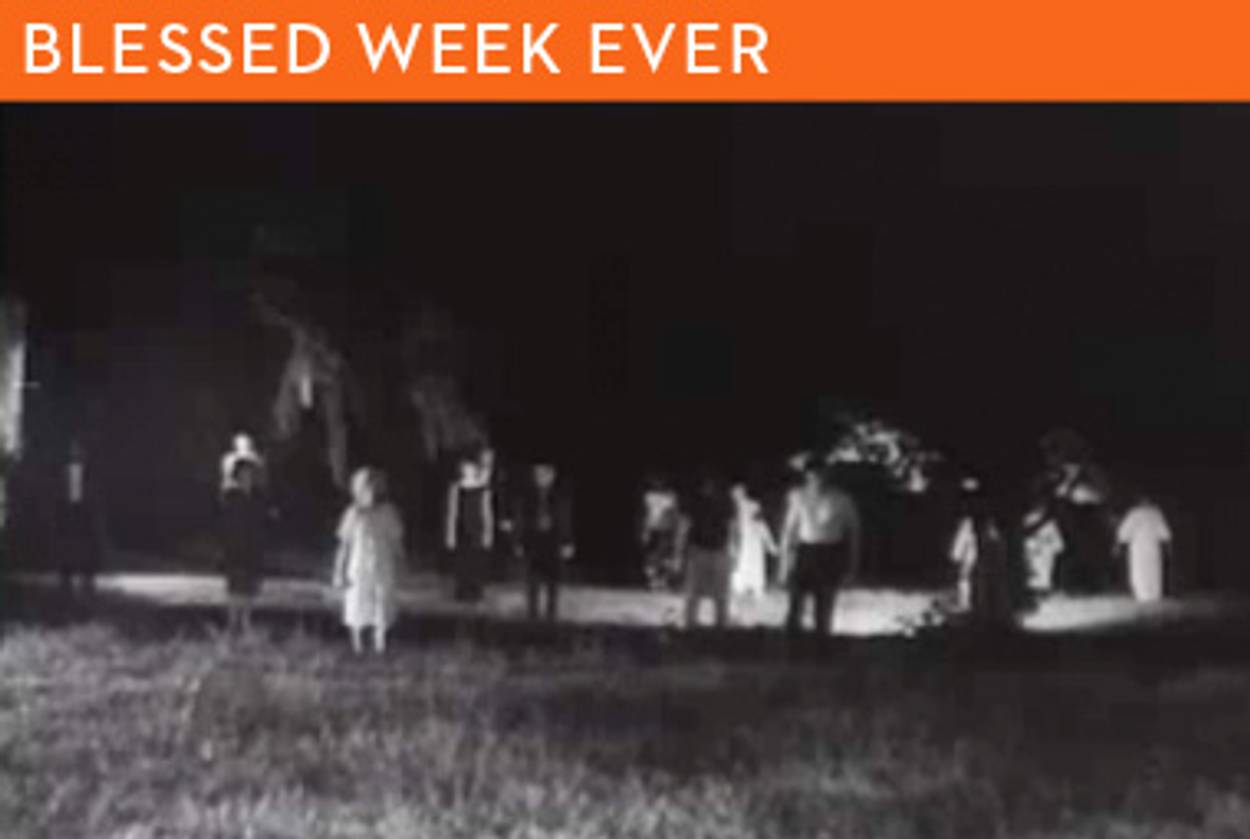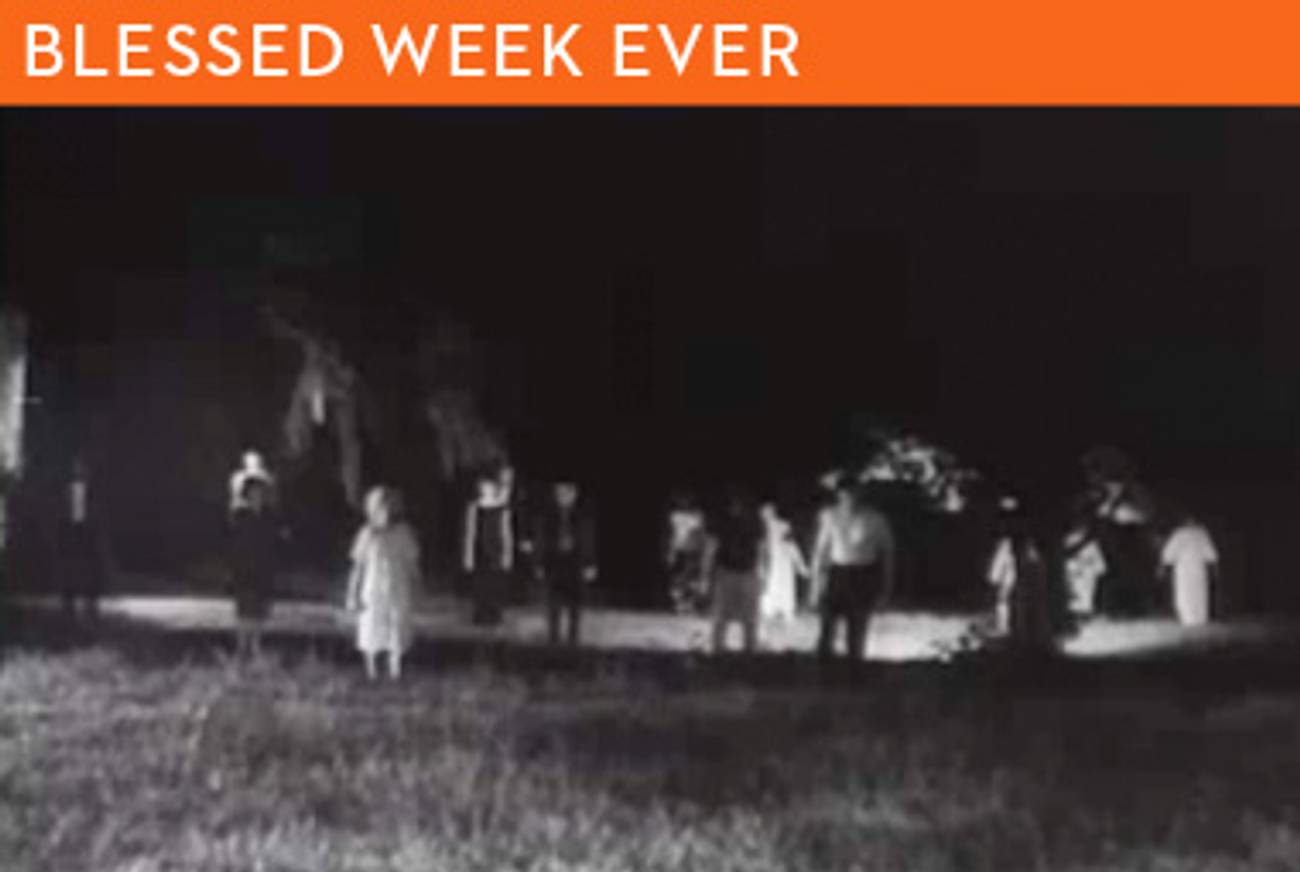Undead
Forget those sexy vampires and shirtless werewolves. Only zombies represent the Torah’s true teachings on life and death, reminding us that death is just a part of life.




Have you noticed how sexy supernatural beings have become? HBO’s True Blood, which entered its fourth season last week, imagines a world in which the introduction of synthetic blood has enabled vampires to come out from hiding, live wherever they wish (which, in the show’s universe, is limited mainly to rural Louisiana), and do as they please (which, this being premium cable TV, primarily consists of sweaty fornication). The vampires in Stephenie Meyer’s Twilight series are just as hot and bothered, but, blessed with the good fortune of having a strict Mormon for an author, are restricted to intercourse only, hallelujah, in the confines of marriage (and only in book three of the series). The Twilight books also feature lycanthropes, mysterious creatures whose talents include turning into wolves and going about shirtless while residing in the inclement weather of Washington state. The same penchant for partial nudity is shared by the protagonists of MTV’s Teen Wolf, a new series about a young man who turns into a ravenous, sexually aggressive beast whenever he’s aroused, a curse inflicted upon those who were bitten by werewolves as well as virtually any other male teenager in the history of mankind.
But even amid this bacchanal of otherworldly hotties, one breed of monsters fades into air: Forgive us, zombies, for we know not what we do.
To be sure, the undead aren’t altogether invisible in popular culture. AMC’s Walking Dead is a fine and thrilling depiction of the days following the zombie apocalypse, and a few recent movies, from Zombieland to Shaun of the Dead, have had clever fun with brain-eating ghouls. But while American girls have neatly lined up in Team Edward and Team Jacob and spent many slumber parties arguing the respective merits of the pale bat versus the big dog, none, I assume, has pined to find herself in the slightly decomposing arms of a lovelorn zombie.
The reason for that is simple: Zombies are on the wrong side of the deathly divide. Unlike vampires, who, if TV and movies are to be believed, have a penchant for attending proms and making out with women in bars well into their 11th decade, zombies die first and then live on. And no matter how hard they try to impress, they can never, it seems, shake the grave’s dirt off their pants: We look at them and see nothing but reanimated corpses. Zombies can’t get no respect.
This should not come as a surprise. After all, in a society as fearful of death as ours, any intimate acquaintance with the afterlife is enough to doom one to the undesirable status of shotgun fodder.
Georges Bataille understood this instinctively. Writing about slaughterhouses, the French philosopher observed that having once been closely connected with religious, ritualistic sacrifice, and therefore placed prominently in the centers of towns, abattoirs have become, in modern times, cursed destinations to be avoided at all costs. “In our time,” he wrote, “the slaughterhouse is cursed and quarantined like a plague-ridden ship. Now, the victims of this curse are neither butchers nor beasts, but those same good folk who countenance, by now, only their own unseemliness, an unseemliness commensurate with an unhealthy need of cleanliness, with irascible meanness, and boredom. The curse (terrifying only to those who utter it) leads them to vegetate as far as possible from the slaughterhouse, to exile themselves, out of propriety, to a flabby world in which nothing fearful remains.”
It would not, perhaps, be too much of a stretch to suggest that one of modernity’s key quests has been the eradication, by whatever means necessary, of death in both its physical and metaphysical forms. Science, law, literature: all bound together to diminish death’s terrible force, to rob it of the power to terrify and afflict. We spend a lifetime fighting death, and when it finally occurs in our vicinity, we rely on a handful of institutions—from hospitals to Hallmark cards—dedicated to helping us sublimate the jarring experience. Bataille was right: We’ll go out of our way to avoid death, even if rationally we know that it is merely life’s logical and inevitable conclusion.
The ancient Israelites, apparently, were no different. In this week’s parasha, we are presented with the strange law of the red heifer. This animal—“a perfectly red unblemished cow, upon which no yoke was laid”—is, God tells Moses, to be slaughtered and burned and its ashes used to purify those who have come into contact with the dead. And while the existence of such a process of purification may be comforting, Jewish thinkers parsing the parasha quickly stumbled on a small problem: Nature, alas, produces very few unblemished red cows. To many commentators, then, this particular law is an example of the Lord’s mysterious ways. Why propose a ritual that could, in all likelihood, never be fulfilled here on earth by us mere mortals? God only knows.
But zombie fans, a group with which I feel a semi-religious affinity, know better. We know that the fear of death, then as now, is a strong and savage force; nothing can spook the living more than coming into contact with the deceased. But what might we do, given that death is all around us? Find a red heifer. And if those are extremely rare? Keep looking.
This is God’s coup de grace. In commanding a ritual involving a species of animal of which he had created so precious few, the Almighty both comforts us by suggesting a magical process by which we might cleanse ourselves of death and forces us to confront our fears once we realize that said magical process is, like all bits of magic, little more than an illusion. This one-two existential punch is the only way to get us to stop worrying and learn to love the great beyond.
Even now, more than 3,000 years after Moses, it’s a lesson we’ve yet to fully learn. We flock to vampire fiction en masse, infatuated with the fanged bloodsuckers and their alabaster skin and eternal youth, or fawn over werewolves and their virility. But we never live forever, and we’ve no red cows to redeem us; much like zombies, all we’ve left to do is slowly become accustomed to the inherently frightening notion of life after death.
Liel Leibovitz is a senior writer for Tablet Magazine and a host of the Unorthodox podcast.
Liel Leibovitz is editor-at-large for Tablet Magazine and a host of its weekly culture podcast Unorthodox and daily Talmud podcast Take One. He is the editor of Zionism: The Tablet Guide.